Herbal formula, source of choline and it’s effect on the apparent metabolisable energy of broiler chicken’s diets
Herbal formula, source of choline and it’s effect on the apparent metabolisable energy of broiler chicken’s diets
Iglesias BF 1 , Azcona JO 1 , Charrière MV 1 , Cabrera AM 1 , Fain Binda V 1 , Paolella M 2 , Borin Jr H 3 . 1 Poultry Section, INTA-EEA Pergamino. 2 Technofeed SA.- Nuproxa Argentina 3 Nuproxa Switzerland Ltd.
In relation to the effect of different sources of choline on the chicken’s performance, papers written by Khosravinia and Col (2015) on the use of lipotropic agents such as the herbal formula BioCholine® showed improvements in weight gain with no changes in consumption, thus generating a slight decrease in conversion. These authors suggest that these results were due to an improvement in energy use. Based on this background information, two tests were conducted to determine the effect of BioCholine® on the diet’s apparent metabolizable energy (AME) using growing chickens and roosters.
A recent test in the field of nutrigenomics (Kim 2018) on the role of BioCholine on growth, gene expression and the production of adiponectin combines a better basic understanding of the mechanisms of action of this plant source of phosphatidylcholine and other joint compounds. Here, replacing choline chloride 60 with BioCholine, at an inclusion rate of 30% of the former, produced significant improvements in the performance of broiler chickens, activated PPAR receptors and stimulated the release of adiponectin, while stimulating genes related to the lipogenic route, preventing fat deposit in the liver.
MATERIALS AND METHODS
Experiment 1
The goal was to determine the effect of two inclusion levels of BioCholine® on the diet’s AME content.
One hundred and twenty one-day-old Cobb-500 male BB chicks were used, kept on the floor, on wood shavings until the age of 14 days (a batch of 24 chickens per treatment). From age 15 to 21 days, they were kept in cages. Water and feed were provided ad-libitum. Up to age 14 days, they were provided starter feed and, to determine AME, finishing feed was used, given its greater fat content.
A random full-block design was used (5 treatments with 8 repetitions of 3 chickens each). Where each cage was considered the experimental unit.
Table 1 shows the evaluated treatments. The experimental diets were provided from the chickens first day of life, so they could adapt to the presence of the evaluated additives in the feed. The Low-Energy (LE) diet was formulated with 100 kcal/kg less than the Control diet, in order to have a reference as to the testing sensitivity compared to the results of T1 vs T2. In turn, the LE diet Nuproxa is close to the type of diet that would result if BioCholine® is paired with a matrix contributing energy (which would result in a diet with a lower fat content).
To determine AME, from the 15 th day, the chickens were kept in cages (5400 cm 2) and began an adjustment period with finishing diets given to the corresponding batches. At age 20 days, dividers were set up to prevent mixing excreta from adjacent batches, the feed aggregate was recorded and, at 24 h, consumption and weight of the excreta produced during that period were determined, using 3 chickens per repetition (batch).
A two-way Analysis of Variance (ANOVA) was conducted. When the level of significance was below 0.05, the comparison of averages was performed using Duncan’s multiple range test. The statistical analysis was conducted using the InfoSTAT software (Di Rienzo, et al., 2012).
Experiment 2
The goal of this test was to determine the effect of BioCholine® (400 g/tn) on the diet’s metabolizable energy content using chickens and roosters.
The chickens were kept in the same conditions shown in Experiment 1. In this opportunity, seven sub-groups of 3 chickens were used per treatment. The roosters were kept in individual cages using 12 sub-groups of 1 rooster per treatment.
The diets were similar to those used in Experiment 1
Determining AME with chickens as described for Experiment 1.
In the case of the roosters, the experimental diets were implemented for 7 days (adjustment period), and the feed consumption and excreta produced for 48 h were subsequently recorded.
The total excreta produced by each rooster was dried in a kiln at 60 ºC for 72-96 h. Finally, the gross energy content in stools and feed was determined, while the AME content of each diet was calculated according to the formula used for determining AME with chickens:
RESULTS AND DISCUSSION
Experiment 1
The difference between T1 and T2 was 115 kcal/kg over an expected figure of 100 kcal/kg (p≤0.05), which allows us to validate the testing sensitivity (Table 4).
There were no differences between the LE diet without added choline (T3) with the same diet containing choline chloride (T2) (p>0.05).
The inclusion of BioCholine® generated increases in AME, achieving figures that did not differ significantly from the Control, or of the LE (p>0.05, Figure 1). This improvement was possibly due to a greater use of gross energy, (p≤0.10 with 400 g/tn of BioCholine® ).
Experiment 2
As expected, there were differences between Control and LE (p≤0.05). In turn, we observed a numerical increase in the AME content favouring BioCholine® over LE (p>0.05), associated with an improvement in the use of gross energy (AME/GE) (p≤0.10).
As expected, there were differences between Control and LE (p≤0.05). Once again, we observed an increase in the AME content favouring BioCholine® over LE (p≤0.05), associated with an improvement in the use of gross energy (AME/GE) (p≤0.05).
While the treatment with Choline Cl was situated at an intermediate position between the LE diet and the diet with BioCholine®.
CONCLUSIONS:
As expected, both tests recorded differences in AME between Control and LE.
The differences in AME due to Choline Chloride did not follow a single identical pattern, as they were found below or above the LE diet according to the test being considered.
The inclusion of a formulated herbal additive, BioCholine® produced improvements in the use of gross energy, translating into an increase in the diet’s AME content. Said improvement ranged from 59 kcal/kg (chickens) to 88 kcal/kg (roosters), with a dose of 400 g/tn.
Read more at
Nuproxa's Blog
Nuproxa Group and Bluejais sign Strategic Alliance
The partnership between Swiss and Dutch companies will launch new innovative products for poultry, p...
+Nuproxa Mexico signs strategic alliance with Innovad and Herbonis
The alliance will add to the Mexican portfolio products such as Panbonis®, a natural and bioactive ...
+Nuproxa Group Appoints Dr. Goetz Gotterbarm as CEO, Making a New Era of Leadership
Etoy, Switzerland January 2024 – Nuproxa Group, a leading player in natural animal nutrition a...
+Nuproxa launches new Mission and Vision focused on innovation, nutrition and animal welfare
Etoy, August 2023 – Nuproxa, a pioneer in providing natural solutions for animal health and nu...
+Read more at
Nuproxa's Blog
Nuproxa Group and Bluejais sign Strategic Alliance
The partnership between Swiss and Dutch companies will launch new innovative products for poultry, p...
+Nuproxa Mexico signs strategic alliance with Innovad and Herbonis
The alliance will add to the Mexican portfolio products such as Panbonis®, a natural and bioactive ...
+Nuproxa Group Appoints Dr. Goetz Gotterbarm as CEO, Making a New Era of Leadership
Etoy, Switzerland January 2024 – Nuproxa Group, a leading player in natural animal nutrition a...
+Nuproxa launches new Mission and Vision focused on innovation, nutrition and animal welfare
Etoy, August 2023 – Nuproxa, a pioneer in providing natural solutions for animal health and nu...
+Natural Polyherbal Sources for Supplementing Vitamin e in Animal Nutrition
Nearly 100 years after its discovery in 1922, is practically consensual that supplementing with Vita...
+Improving production efficiency by controlling protozoa via herbal blend
The continuous improvement of production efficiency in industrial poultry farming still remains an e...
+Importance of the use of liver protectors in the production output of broilers
The liver is the organ performing the largest number of vital functions indispensable for the animal
+Importance of the use of liver protectors in the production output of broilers
The liver is the organ performing the largest number of vital functions indispensable for the animal...
+Dorsal fat reduction in pigs: nature has the solution
Pig farming is constantly changing. Since its technification in the 1970s, new knowledge and technol...
+Efficient solutions and better results
Pig farming is constantly changing. Since its technification in the 1970s, new knowledge and technol...
+Natural Polyherbal Sources for Supplementing Vitamin e in Animal Nutrition
Nearly 100 years after its discovery in 1922, is practically consensual that supplementing with Vita...
+Herbal formula, source of choline and it’s effect on the apparent metabolisable energy of broiler chicken’s diets
In relation to the effect of different sources of choline on the chicken’s performance, papers wri...
+
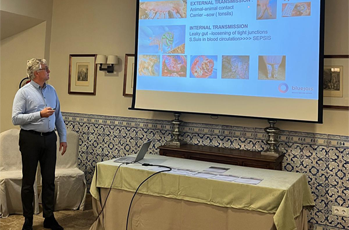

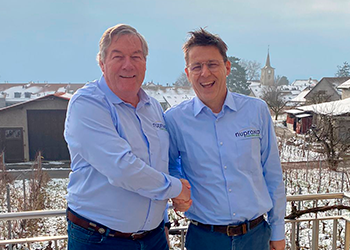


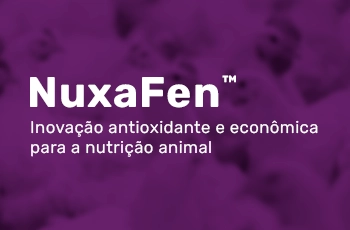
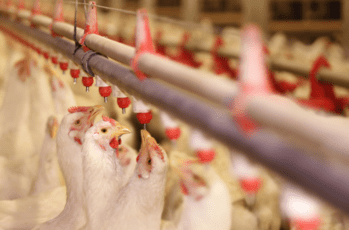
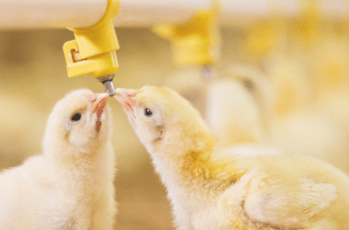
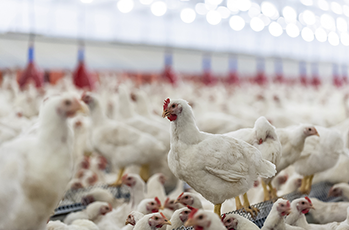
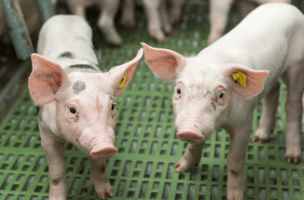
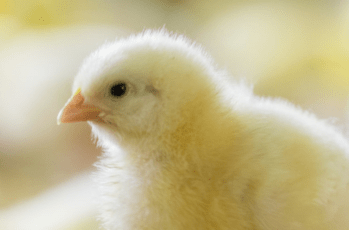
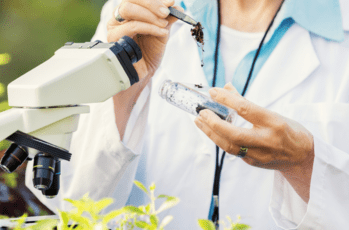
receive our newsletters.